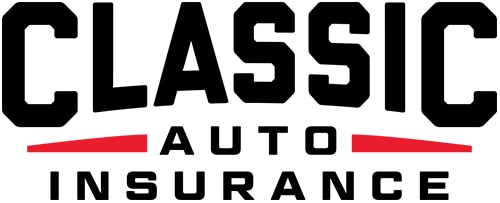Originally introduced as a full-sized car in 1960, by its fourth generation, the Dodge Dart was a newly stylized compact car with a fresh steering system and redesigns that allowed for a larger engine. If you grew up in the 70s, you might associate the car with the high school staff parking lot, or even your own driveway. Fundamentally a budget compact, the popular, pedestrian nature of the Dart allowed its high-performance alternatives to be surprisingly cool–even deceptively so. From dog-dish hub caps to look-at-me paint jobs, the Dart’s affordability and tunable engine allowed for owners to flex their creative muscles alongside this muscle car. Today, the Dart offers unique value compared to its competitors when it comes to classic collectibles.
Discovering the Dart’s Origins
- Originally a Chrysler concept car designed by Ghia and unveiled in 1957, the Dodge Dart began production in 1960.
- In 1963, Dodge updated its Lancer series but kept the catchy name of the Dart, selling it until 1966. This car had a good look but lackluster muscle, with room only for a 273 cubic inch V-8.
- 1967 saw Chrysler redesign the A-body platform. Fourth-generation Darts thus took on a streamlined, subtle musculature, that while fine, wasn’t particularly exciting. However, underneath its skin, the 1967-76 Dart offered up more room under the hood for bigger engines, allowing it to rightfully flex its muscles.
- In late 1967, Dodge took advantage of the “need for speed” that young drivers craved and met them with the inexpensive Dart GT Sport (GTS) model that fit a young driver’s budget and thirst for thrills with a 383 cu-in V-8.
- In 1968, the GTS came as a hardtop coupe or a convertible, furthering its popularity with the public, and the 383 cu-in V-8, while still an option, took a backseat to a now standard 340 cu-in V-8. Cars with the 383 cu-in were bigger and heavier, but the 340 saw more balance with a similar speed. Additionally, the 383 cu-in saw little room to spare, so power steering pumps and air-conditioning were nowhere to be found.
- Also in ‘68, a select number of Darts gained a 440 cu-in V-8, with 480-lb of torque and 375 hp. Chicago’s legendary Grand Spaulding Auto Sales sold its own “Grand Spaulding Special“ (GSS) 440 Darts with 383 badges. 50 originals exist and are on many Mopar collector’s most-wanted lists.
Rare Darts
- In 1969, Dodge sold approximately 200,000 Darts. 650 of them were M-code, 440-powered Darts without factory warranties, meant primarily for drag racing that came with a three-speed TorqueFlite automatic. Shockingly, they only came with four-wheel drum brakes.
- Additionally, NHRA Super Stock drag racing saw the production of Hemi Darts with 426 Hemi and extreme lightweight treatment. These cars number at about 80, making them a rare find and even rarer sale.
Swingin’ into Sales
- 1969 was a big year for Dodge, who also introduced the Swinger 340. This car had bumblebee stripes, Hurst four-speed, and Rallye suspension. Marketed for “swingers,” who by definition at the time were fashionable, exciting people and not spouse-swappers, this car became the sportiest version of the Dart available in 1970 as no more 383s were being produced.
- In 1971, the Demon 340 replaced the Swinger as the sporty Dart. Taking a cue from Plymouth’s 1970 Duster, the Demon featured a dual-scoop matte black hood, hood pins, and even a devil badge on its tail.
The End of an Era
- Dodge continued to promote the affordability and value of its Dart, but as tighter emissions rules raged and insurance rates for muscle cars skyrocketed from 1972 on, Mopar’s muscle weakened.
- The 1973 performance Dart was reconceived as the Dart 340 Sport, and with 240 net hp, was a star on that year’s lineup. This was followed by the 1974 360 Sport (245 hp).
- In 1974-75, Dodge introduced the “Hang Ten,” which featured eggshell paint, a striped hood, and pinstriped sides the culminated in an image of a surfer on the tail, The interior featured fold-down rear seating, providing room for a surfboard, striped bucket seats, and shag carpeting that was (unfortunately) orange.
- In 1976, Dodge celebrated America’s bicentennial with the patriotic Dart Spirit of ‘76. Though a fun design, 1976 saw a fall in Dart sales and Dodge ceased production the following year in the United States, replacing it with the F-body Aspen.
Collecting Darts
Classic Darts continue to carry the mantle they did back in the day of offering up speed and fun at a great rate per dollar. Apart from the 2008-09 recession, Darts have seen more steady values than other muscle cars, with prices only creeping up slightly in the past few years. Hemi Darts can easily draw six figures, with the world record sale at $330,000 for a Hemi Super Stock. ‘67-’69 Dart models can value anywhere from $30,000 upwards, with 1970s versions becoming more budget-friendly.
Protecting Your Collectible
Insuring classic cars isn’t as simple as insuring current cars. Special cars call for specialized insurance coverage, and whether your collectible has high-impact paint like this incredible neon green 1965 Dodge Dart (shown at the 2016 Detroit Autorama) or a limited edition MOPAR ‘13 Dart, you deserve the best insurance, tailored to you. You’ve worked hard to build your legacy, and it deserves to be protected so that it can be passed on.
Collector and Classic Car Insurance for Less
Whether the engine in your collector car is new or old, whether it’s a limited edition or custom made, it’s a valuable investment. Let Classic Auto Insurance customize a policy to fit your needs. We offer affordable, Agreed Value coverage for a variety of collector, classic and custom vehicles. Our friendly, knowledgeable staff can answer your questions and give you a quote on the spot. Call 888-901-1338 or get an instant quote online and see how we can help safeguard your dream car.





